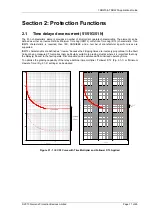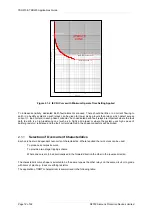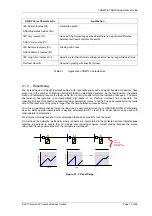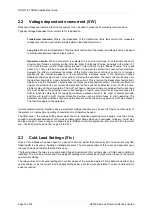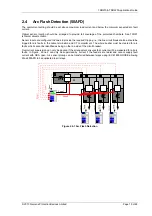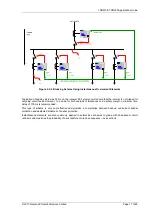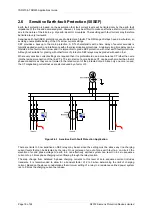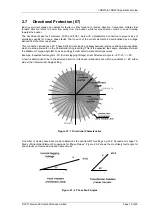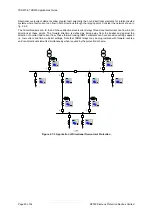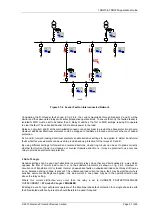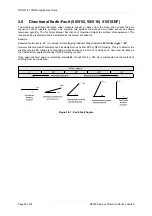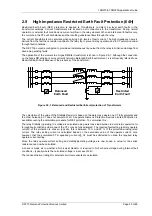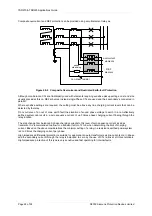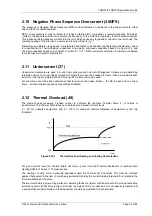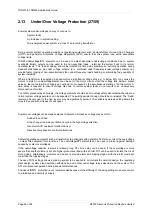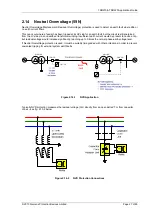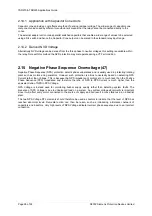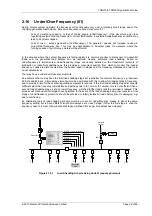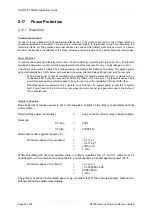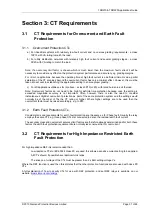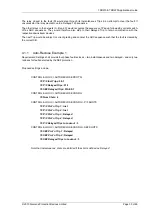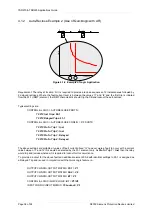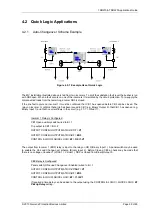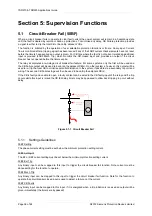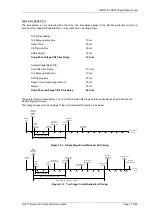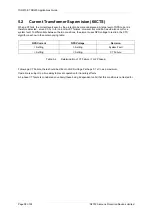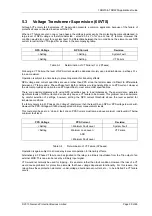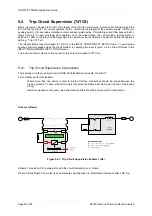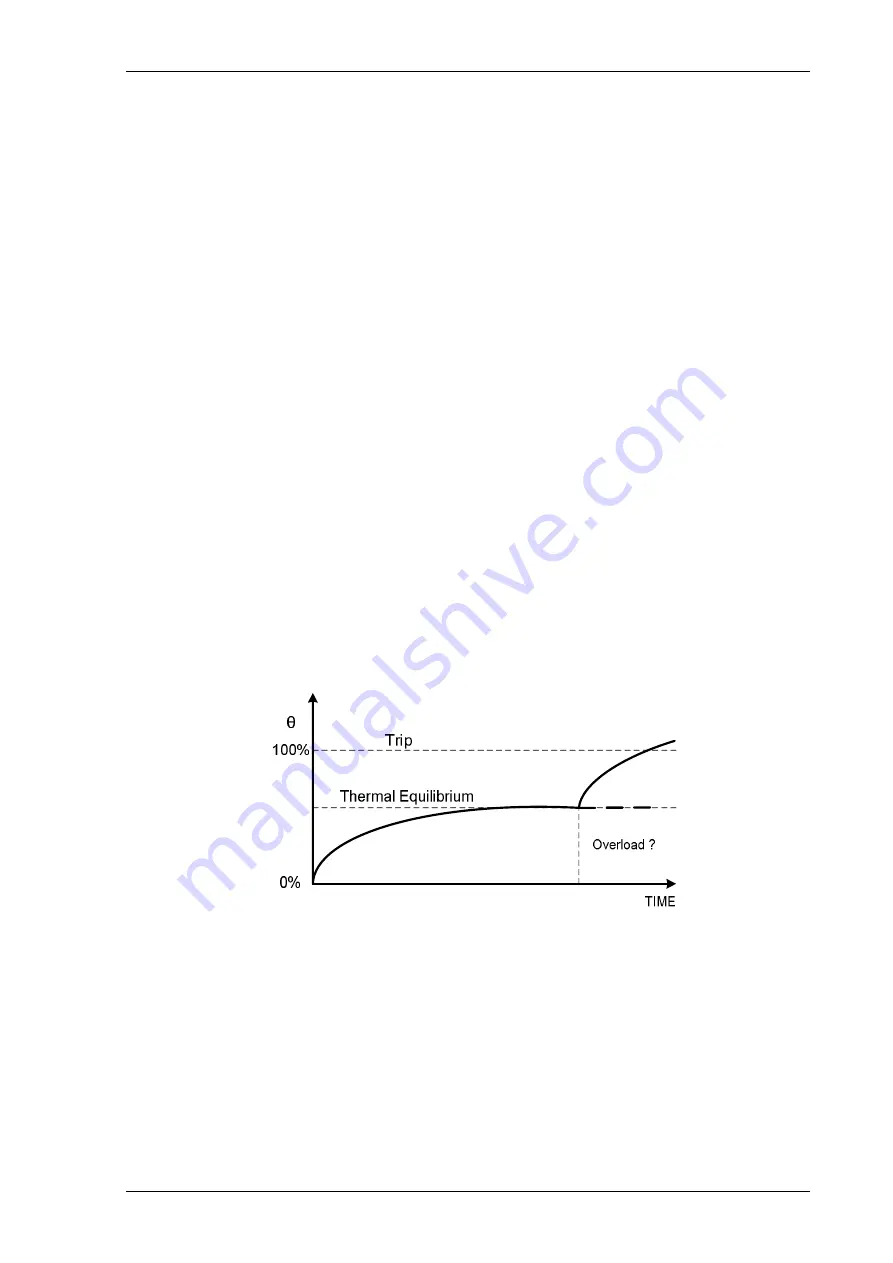
7SR210 & 7SR220 Applications Guide
© 2013 Siemens Protection Devices Limited
Page 25 of 48
2.10 Negative Phase Sequence Overcurrent (46NPS)
The presence of Negative Phase Sequence (NPS) current indicates an unbalance in the phase currents, either
due to a fault or unbalanced load.
NPS current presents a major problem for 3-phase rotating plant. It produces a reaction magnetic field which
rotates in the opposite direction, and at twice the frequency, to the main field created by the DC excitation system.
This induces double-frequency currents into the rotor which cause very large eddy currents in the rotor body. The
resulting heating of the rotor can be severe and is proportional to (I
2
)
2
t.
Generators and Motors are designed, manufactured and tested to be capable of withstanding unbalanced current
for specified limits. Their withstand is specified in two parts; continuous capability based on a figure of I
2
, and
short time capability based on a constant, K, where K = (I
2
)
2
t. NPS overcurrent protection is therefore configured
to match these two plant characteristics.
2.11 Undercurrent (37)
Undercurrent elements are used in control logic schemes such as Auto-Changeover Schemes, Auto-Switching
Interlock and Loss of Load. They are used to indicate that current has ceased to flow or that a low load situation
exists. For this reason simple Definite Time Lag (DTL) elements may be used.
For example, once it has been determined that fault current has been broken – the CB is open and no current
flows – an auto-isolation sequence may safely be initiated.
2.12 Thermal Overload (49)
The element uses measured 3-phase current to estimate the real-time Thermal State,
θ
, of cables or
transformers. The Thermal State is based on both past and present current levels.
θ
= 0% for unheated equipment, and
θ
= 100% for maximum thermal withstand of equipment or the Trip
threshold.
Figure 2.12-1
Thermal Overload Heating and Cooling Characteristic
For given current level, the Thermal State will ramp up over time until Thermal Equilibrium is reached when
Heating Effects of Current = Thermal Losses.
The heating / cooling curve is primarily dependent upon the Thermal Time Constant. This must be matched
against that quoted for the item of plant being protected. Similarly the current tripping threshold,
q
I
is related to the
thermal withstand of the plant.
Thermal Overload is a slow acting protection, detecting faults or system conditions too small to pick-up fast acting
protections such as Phase Overcurrent. An Alarm is provided for
θ
at or above a set % of capacity to indicate that
a potential trip condition exists and that the system should be scrutinised for abnormalities.
Summary of Contents for Argus 7SR21
Page 1: ...Energy Management 7SR21 7SR22 Argus Overcurrent Relay Reyrolle Protection Devices ...
Page 2: ......
Page 4: ...Contents 7SR11 and 7SR12 Page 2 of 2 2018 Siemens Protection Devices Limited ...
Page 185: ...7SR210 Settings Guide Unrestricted 2018 Siemens Protection Devices Limited Page 61 of 61 ...
Page 277: ...7SR220 Settings Guide Unrestricted Page 72 of 107 2013 Siemens Protection Devices Limited ...
Page 382: ...7SR220 Technical Manual Chapter 4 Page 2 of 96 2017 Siemens Protection Devices Limited ...
Page 386: ...7SR220 Technical Manual Chapter 4 Page 6 of 96 2017 Siemens Protection Devices Limited ...
Page 398: ...7SR220 Technical Manual Chapter 4 Page 18 of 96 2017 Siemens Protection Devices Limited ...
Page 414: ...7SR220 Technical Manual Chapter 4 Page 34 of 96 2017 Siemens Protection Devices Limited ...
Page 466: ...7SR220 Technical Manual Chapter 4 Page 86 of 96 2017 Siemens Protection Devices Limited ...
Page 468: ...7SR220 Technical Manual Chapter 4 Page 88 of 96 2017 Siemens Protection Devices Limited ...
Page 470: ...7SR220 Technical Manual Chapter 4 Page 90 of 96 2017 Siemens Protection Devices Limited ...
Page 472: ...7SR220 Technical Manual Chapter 4 Page 92 of 96 2017 Siemens Protection Devices Limited ...
Page 643: ...Unrestricted ...

